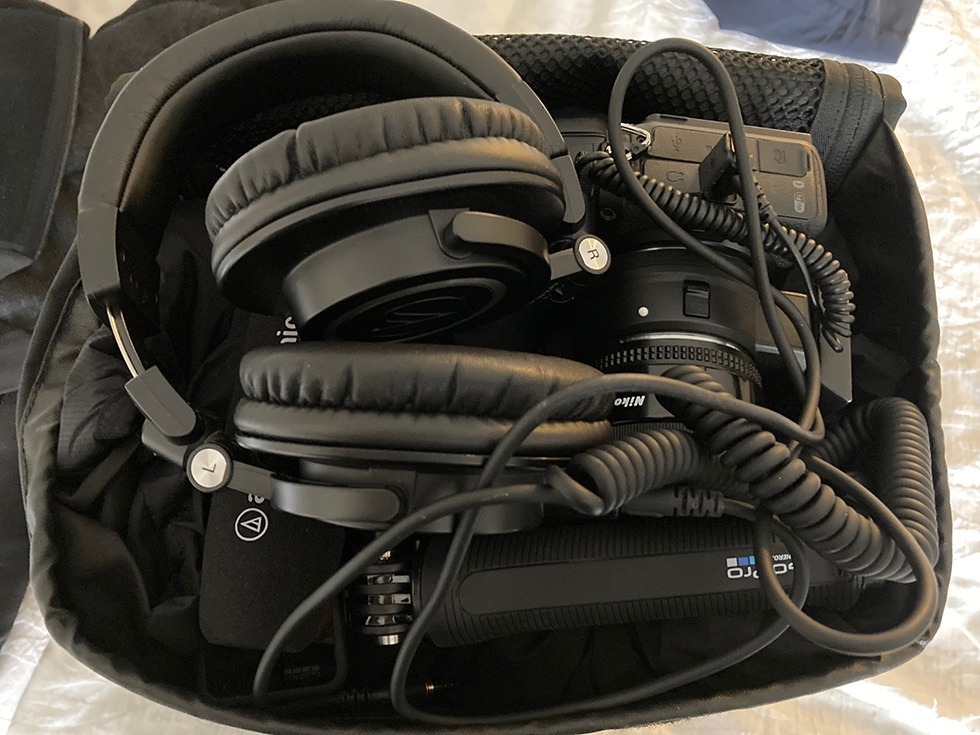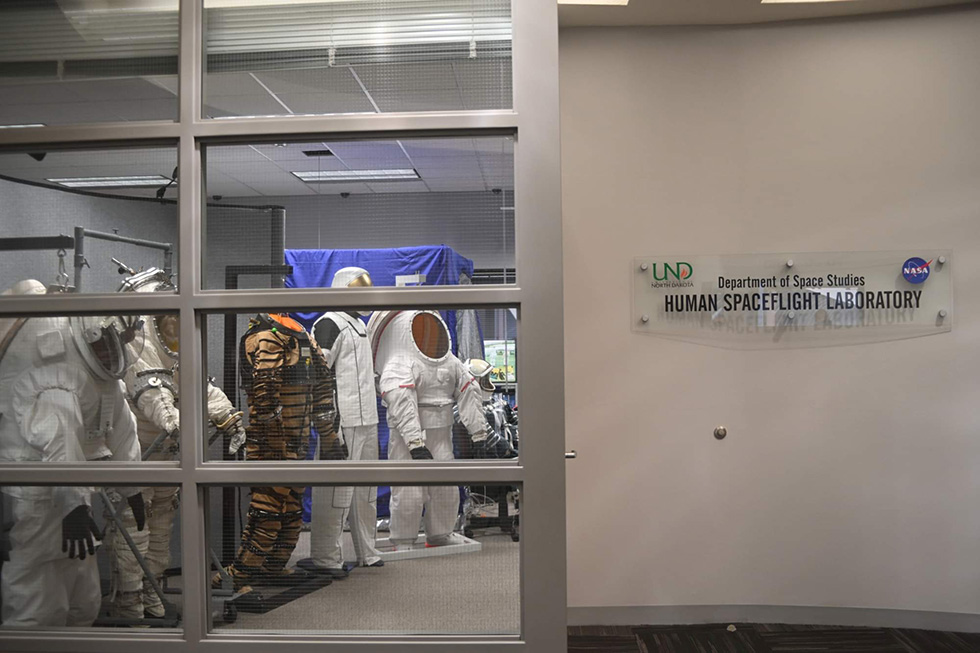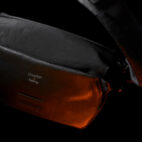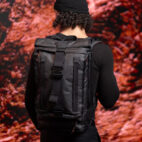
Insights

We all know that science never sleeps. So I’m back again for a bag and techwear review, this time after a successful Mars mission simulation in the Moab desert at the MDRS Mars Desert Research Station in Utah and a four-week-plus trip from Utah to North Dakota and Arizona to visit amazing space missions’ simulation facilities.
During my trip, I had the opportunity to also field test the BAGJACK SKIDCAT and other amazing gear and bags that I describe later in the article.
This all started when I got selected to participate in the Space Medicine OPerationS mission (SMOPS) as a crew journalist, for a 15-day Mars mission simulation in the Moab desert, a place very similar to the surface of Mars in terms of geology.

I joined an almost all-Italian team, as this particular mission was endorsed by the Italian Space Agency and was organized in partnership with Mars Planet, the Italian chapter of the Mars Society.

Our mission had been delayed several times due to Covid-19. For more than a year, we had to meet via Zoom. I felt like I already knew the members of the team during our first face-to-face meeting, just before the start of the simulation, what we call “entering the sim” between us. The team gathered around the table during our last meal on Earth, in the small town of Hanksville, located a few kilometers from our habitat in the desert. Vittorio Netti was our mission commander, an Italian space architect who is currently a researcher in Houston. Paolo Guardabasso, our crew executive officer, is a Sicilian engineering student preparing his doctorate at ISAE-SUPAERO in France. Nadia Maarouf, our health and safety officer, was the on-board doctor who was the principal investigator for an experiment for the University of Calgary. Simone Paternostro is an engineer from the European Space Agency based in the Netherlands and Luca Rossettini is the CEO of D-Orbit, a flourishing company leader in space logistics.

As usual for these types of simulation, our diet consisted mostly of freeze-dried ingredients for 15 days, but at least at MDRS we had the opportunity to cook the ingredients, and quickly enough I started to bake fresh bread for the whole crew. Over 15 days we engaged in amazing research activities, including extravehicular activities outside the station, always wearing our simulation astronaut suits, with a five-minute wait inside the hatch to enter or exit the habitat. And this time we had access to four cool “Mars Rovers” to navigate quickly around the station.


The crew conducted soil sampling around the station the way the first Mars explorers will probably do. And we also tested various technologies, from installing a ground antenna to contact a satellite in orbit around our planet, to wearing a quite non-stop odorless smart t-shirt, the Canadian Space Agency’s Astroskin, that recorded all our physiological data in real time over 10 days and which has already been tested onboard the International Space Station.
I also had the amazing opportunity to field test a handheld 3D scanner from Leica Geosystems, the BLK2GO, to make three-dimensional virtual models of our station as well as scan particular rock formations around the station. (If you’ve seen the movie Prometheus, the technology is in a way similar to how the crew scans the facility in the movie… though this model was handheld, of course.)

These were an intense 15 days packed with hard work, amazing experiments, great Italian food, and a daily dose of laughter.




But as I said goodbye to my beloved crew, the mission did not end there for me, as I headed north the next day to the University of North Dakota to participate in an experiment held at the ILMAH (Inflatable Lunar-Mars Analog Habitat) organized by the Space Studies department of the university.


There I helped my friend and colleague, Terry Rector, a PhD candidate at the Space Studies department and a retired army officer from the Air Force Space Command to conduct research on the minds of astronaut-like candidates to make sure that future Mars explorers will be able to pilot drones and land safely once they will have reached the Red Planet.


There again for 15 days under clement and inclement weather, I helped him and documented his research with the current crew living inside the ILMAH habitat.

I then headed back south to Arizona to attend the second Analog Astronaut Conference at the historical site of Biosphere 2, where I met old and new friends and colleagues from the space sector before going back to France after a couple of days in Tucson visiting a dear friend.

Let’s have a look at the bags and break down the gear that I brought for those missions.
From left to right and top to bottom:

Perfect as a carry-on in the US and Canada, but apparently a bit too big for European flights. I love the Pro Photo Kit and the undeniable sturdiness of the case itself. I have no doubt that this bad boy can take a beating. The space-related stickers collection is an ongoing process…
For this mission I used PNY PRO Elite SD cards to record my photos and videos in 4K and they definitely did their job properly.
University of North Dakota / ILMAH Notebook offered to me by long-duration space missions researcher Terry Rector.
These sunglasses come with a clickable strap that made them very handy for our Mars mission simulation.
Aputure MW waterproof travel light for photography
This one went straight to my daily documentary filmmaking gear set after this mission.
BAGJACK SKIDCAT NXL Tech Line Backpack
An amazing backpack, I would say unsurprisingly coming from BAGJACK and their well deserved reputation in the Techwear scene worldwide. Comfortable, very durable, and highly versatile.
My Crew Journalist patch/name tag a.k.a: “there are many mission name tags, but this one is mine”
SEGMENT SUPPLY X-Pac Laptop Sleeve
An unexpected gem from Segment Supply if you are like me into black X-Pac. Form and function the way we love it in the techwear scene.
An LED lantern for the outdoors with so many colors and functions inside.
La French Fab mission patch
Crosscall Action-X5 rugged smartphone
A rugged smartphone that I used mostly through our Starlink Wi-Fi connection while on Mars.
Aputure MC mini LED color light for photography and film
Another great product from Aputure for lightweight packing for filmmakers on the road.
Nagra Seven audio recorder for film and field recording
The “car radio from space” as some sound engineers call it. Definitely my favorite portable digital audio recorder for documentary filmmaking.
NANUK 910 DJI Mini 2 Fly More Case
A great carrying case for my DJI Mini 2
Challenge coin from the cognitive decay memory recall long-duration space flight experiment
SMOPS mission patch
Our mission’s patch that carries so many great souvenirs for me.
A very comfortable baselayer from GRAPHENE-X. I like many items from their line including their hardshell as well.
Audio-Technica AT8024 camera mount mic and Audio-Technica ATH-M50x headphones
Because filmmaking is audio-visual I always enjoy the quality of Audio-Technica products
I must say that I am a big fan of this one. Black, Gore-Tex, and a Mac coat. Need I say more?
SMOPS mission crew personal t-shirt. Limited edition of three, only for me as the crew journalist.
For these missions, I came from Paris to the US for over four weeks. So I came with two carry-on bags and my usual expedition duffel bag. My main carry-on for photography and filming gear was my Nanuk 935 Pro Photo Kit. This case is perfect for flights in the US because the dimensions fit perfectly as a carry-on. Inside I kept my Nikon camera, lenses, lights, and other filming gear.


My second carry-on was a really amazing and super versatile backpack from BAGJACK, the SKIDCAT in its LARGE, NXL Tech Line version.

The backpack comes with BAGJACK’s famous attention to detail and the handmade in Berlin label that guarantees durability, high-level craftsmanship, and of course a next-level design. With a carrying capacity of 25-32 liters, it can very quickly morph from the maximum carry-on-friendly H47 x W33.5 x D16 cm dimensions to a smaller shape that will qualify it as an accessory during your flight should you need it, while still looking absolutely badass.
There are also so many features in this bag that I will probably forget some in this review. It comes with AustriAlpin Cobra® aluminum buckles, MOLLE-compatible nylon webbing, padded straps, a Cordura® outer bag, exterior pocket with water-repellent YKK® zip in dim black, extension straps to expand the volume, a padded strap handle, umbrella pocket, reinforced corners, a back pad, removable inner bag from truck tarpaulin, two detachable inner pockets with Velcro fitting and zip, a rain protection flap with draw closure, a secret pocket with zip and a top flap compartment.
During my different flights and different types of use over those four weeks, I used it in many different configurations.

Though I consider it as a perfect carry-on and travel bag, it is not at its core a photography bag. So some days I removed the inner bag made from truck tarpaulin so that a camera bag insert from f-stop would fit perfectly inside it with my filming gear.


It is certainly a pricey backpack and one of the most expensive that I own (the other one being an Acronym X Bagjack 3A-5TSR that I bought years ago), but this backpack is truly incredible. I’m sure there are still hidden pockets that I haven’t found yet and I have no doubt about its durability both in terms of fabric and design. It was a true pleasure to have it for this specific mission and I certainly look forward to bringing it as my carry-on for private travels in the near future. It is a very comfortable backpack, though of course I didn’t use it for mountaineering. Like many techwear aficionados I also enjoy the MOLLE system on this specific model, and back home I now use it with some of my favorite BAGJACK accessories and attachments for my daily commute to my producer’s office.

Many thanks to Benjamin Pothier for this article.





 Carry Awards
Carry Awards Insights
Insights Liking
Liking Projects
Projects Interviews
Interviews










One thought on “Mars Mission Simulation | Packing List”
Comments are closed.